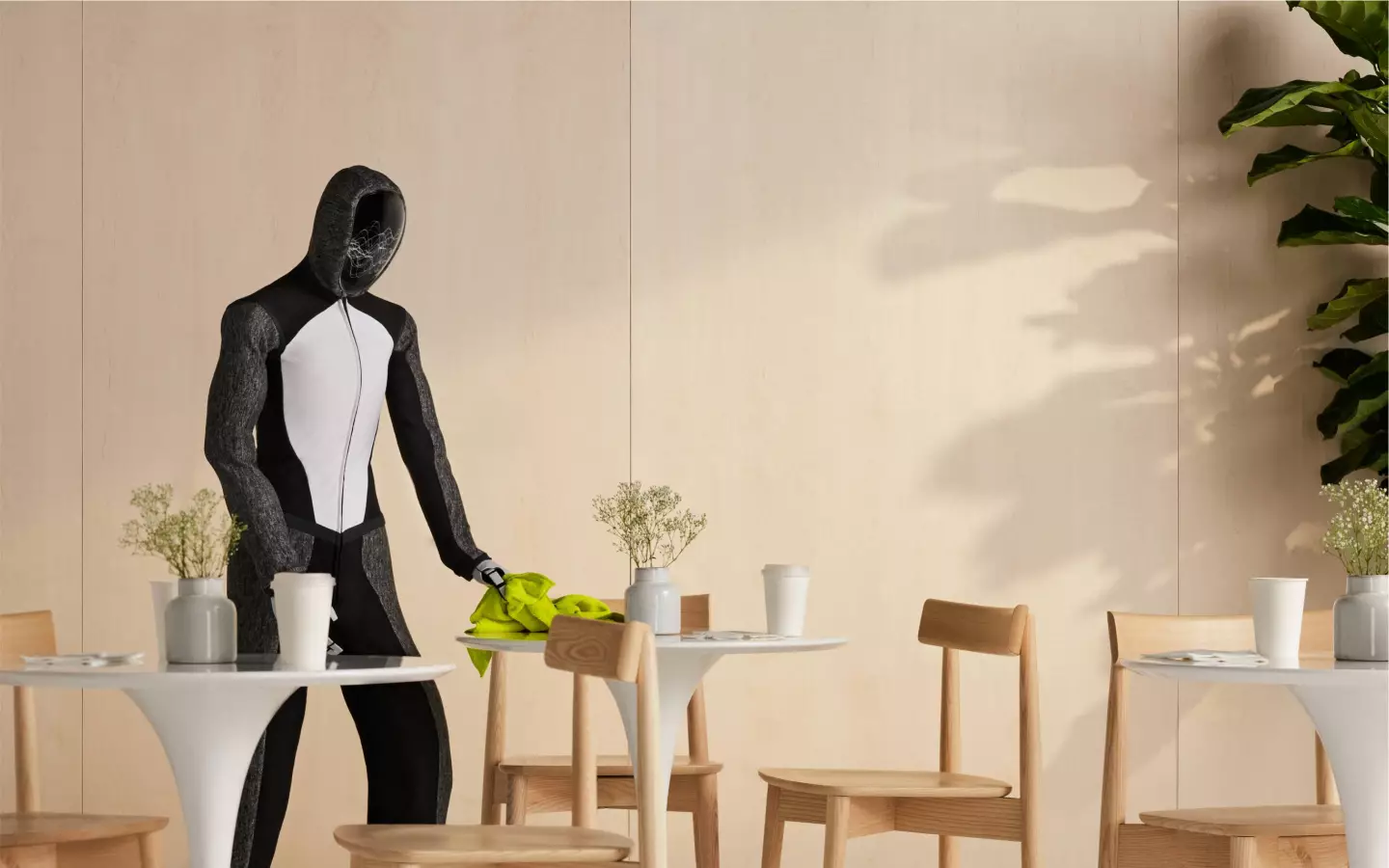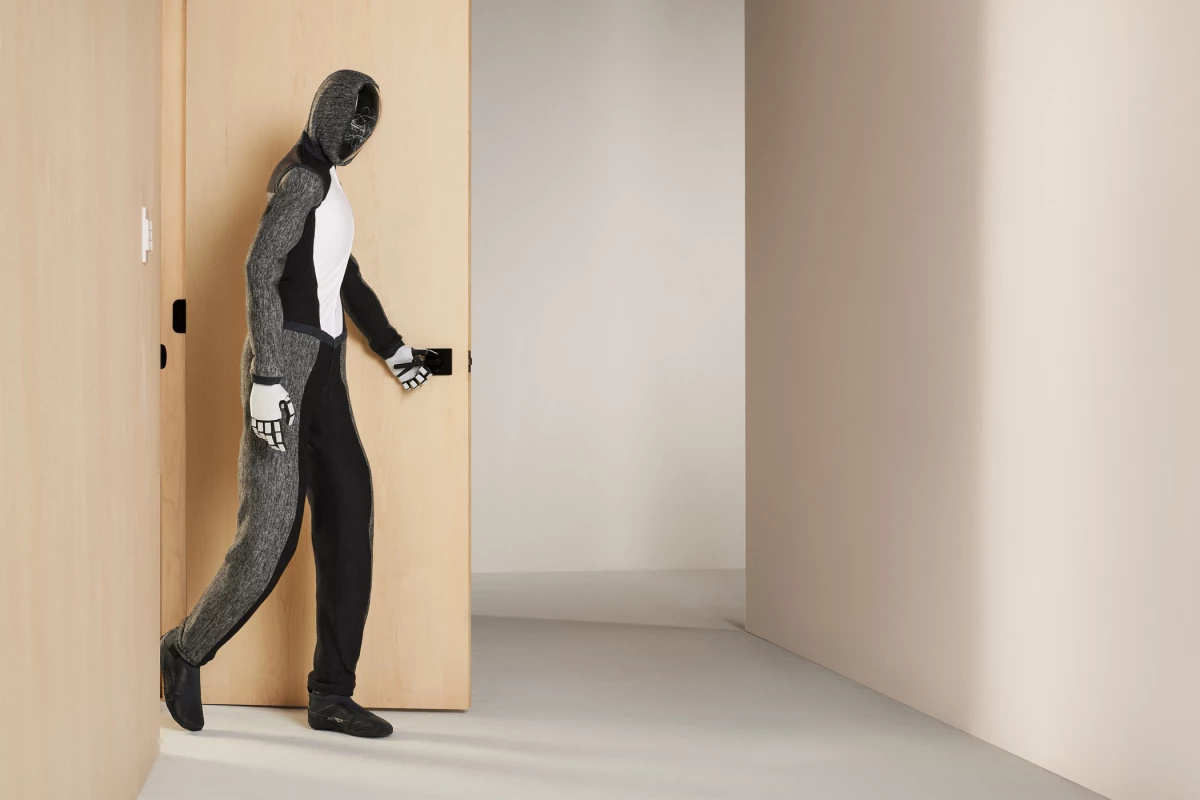Back in February, Norway's 1X showed off the progress it had made with its pick-and-place workplace humanoid, Eve. Now the OpenAI-backed company has released video footage of its latest prototype, a bipedal butlerbot named Neo Beta.
Eve doesn't walk on two legs but wheels along at up to 9 mph (14.5 km/h). It lacks human-like hands, instead using claws for repetitive pick-and-place operations. And its egg-shaped head features a fairly simple LED matrix face that masks the AI-driven smarts within. But given its likely deployment on manufacturing lines in the factories of tomorrow, such things are fit for purpose.
When it comes to designing a general-purpose humanoid destined for domestic duties in the home, a bipedal seems to be the design of choice at the leading edge of butlerbot development. And so it is for 1X, as the Neo Beta is officially introduced (though it did make an appearance in March, on stage with NVIDIA's Jensen Huang).
Yes, it's a very brief video and, unlike other promos, it doesn't show the humanoid helper performing a multitude of everyday household tasks. But we can see that the Neo Beta bot wears a sporty fabric jumpsuit to disguise the "muscle-like anatomy" within, and features a more oblong visage that currently displays multi-line animations. It also sports dexterous five-digit hands that look more bot than human, but are clearly designed for grasping and holding a wide array of objects.
Unlike previous demo vids, 1X hasn't mentioned whether the few operations shown are the result of teleoperation, carefully choreographed routines or fully autonomous behaviors. Though the product page does mention that a combination of robotics and AI – called embodied learning – is used to ensure that the Neo is skilled in the various aspects of domestic duties, and that the robot will "become smarter and more capable over time."

Users will be able to interface via natural spoken language, and the Neo is being designed to understand its physical environment so it can perform "real tasks throughout your workplace and your world." The company does note that, if needed, a remote human operator can take control of the humanoid's vision and movement.
Thanks to a post on X from Jason Carman for the S3 online docuseries, we can get a better feel for the Neo project, and where development is currently at. The 1X CEO is also shown estimating the cost of a production unit to be about the same as "a relatively affordable car."
Since 2014 @1x_tech has been building humanoid-like robots.
— Jason Carman (@jasonjoyride) August 31, 2024
Now, they're revealing their new robot, NEO, to the world. pic.twitter.com/NnwdSoaUZ5
According to the given specs on the product page, the Neo stands 5.41 ft (1.65 m) high – a little shorter than Eve – and weighs in at 66 lb (30 kg) while being able to carry 44 lb (20 kg) of household items, shopping or whatever. It can get up to 7.5 mph (12 km/h) at a run, but will spend much of its time walking at up to 2.5 mph (4 km/h). Per-charge operation time for its onboard batteries is between two and four hours. No doubt more details will follow as the project moves forward.
1X has revealed that the Neo humanoid is being developed for mass production at the company's own factory in Moss, Norway – though it hasn't yet confirmed whether its Eve humanoid will help with the assembly. As indicated by the robot's name, the project is currently at the beta stage of development but you can sign up to a waitlist now, and 1X will keep you posted on availability.
"Our priority is safety," said 1X CEO, Bernt Børnich. "Safety is the cornerstone that allows us to confidently introduce Neo Beta into homes, where it will gather essential feedback and demonstrate its capabilities in real-world settings. This year, we are deploying a limited number of Neo units in selected homes for research and development purposes. Doing so means we are taking another step toward achieving our mission."
Source: 1X







